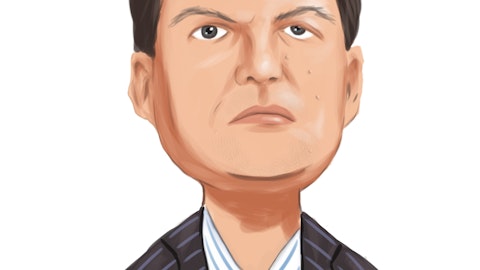Scott Braunstein: Great. And Joe, before I turn over to you, I just wanted to comment a little bit on for ZTALMY and the folks in the audience that the RAISE Trial itself primarily we’re using adult sites, but we have about 10 sites who are in the pediatric age range, typically 12 and above. And so the extension of the trial to younger patients would primarily affect those sites that right now have a limited 12 and above population. But in terms of our expectation and the success of the drug in younger populations, I’ll turn it over to Joe. And Joe, you may also want to comment on some of our experience in SRSE with ganaxolone.
Joe Hulihan: Yes. No, absolutely, Scott. Yes. We don’t, I think what you’re asking about Joe, there was a little bit of background noise, but was about €“ their response in children compared to adults. And we don’t expect children to do certainly any worsen at least as well as adults. And we have had some €“ we’ve treated now about 14 patients under emergency INDs for super refractory status, and we’ve had some great responses in the kids. And so we expect the kids who enroll in the trial to do well, and actually this amendment should give us a good boost in terms of the eligible population because in terms of kids status is more common in kids under 12 than in adolescents. So we’re hoping to go down to age two and we’re sending a request to the FDA very shortly about that.
Joseph Thome: Perfect. Thank you very much. It’s very helpful.
Operator: And we will take our next question from Andrew Tsai with Jefferies. Your line is open.
Andrew Tsai: Hi. Thanks, and good morning. Congrats on all the progress. So maybe one on CDD, another one on RSC. So on the CDD launch, 50 patients seems pretty strong as of September 30th. You’ve previously said not to expectable, is that still the case for you guys? And just curious, where is the total patient count today relative to the 50 as of September 30th? And then secondly for RSC; can you just remind us the latest and greatest on what you expect the placebo response rates to be for the two co-primary endpoints and why that should be the case? So percent of patients having cessation within 30 minutes, and then percent of patients not moving to IV anesthesia, that’d be very helpful? Thank you.
Scott Braunstein: Thanks Andrew. Joe, you want to take the first question on RSC and then we can turn it over to Steve and Christy on CDD?
Joe Hulihan: Yes. So we were very conservative in terms of sample size estimation for the trial. We got an idea of the placebo response from our investigators and our advisory board. And for the first co-primary endpoint response within 30 minutes, I think the placebo response, frankly, I hate to be over confident, but will be negligible. The thought that status would stop on its own within a half hour. I’m confident about that. So, conservatively 10% placebo response potentially. The second co-primary endpoint escalation to IV anesthesia, again we surveyed our sites and they said we get into the profile, the patient coming into the study. That’s where we got the estimate. The sample size calculation is based on a 45% placebo response and a 75% €“ I mean 75% placebo response that is progression to IV anesthesia and 45% progression in the ganaxolone arm.
I think that’s extremely conservative. And so the 30% delta, and actually that gives us over 90% power. And we talked about the interim analysis that’s also well-powered at the point we get to 82 patients, I think, that still gives us a very high amount of power to detect the treatment difference.
Scott Braunstein: Steve, you want to kick off on the numbers and then we’ll turn it over to Christy for any other comments?

